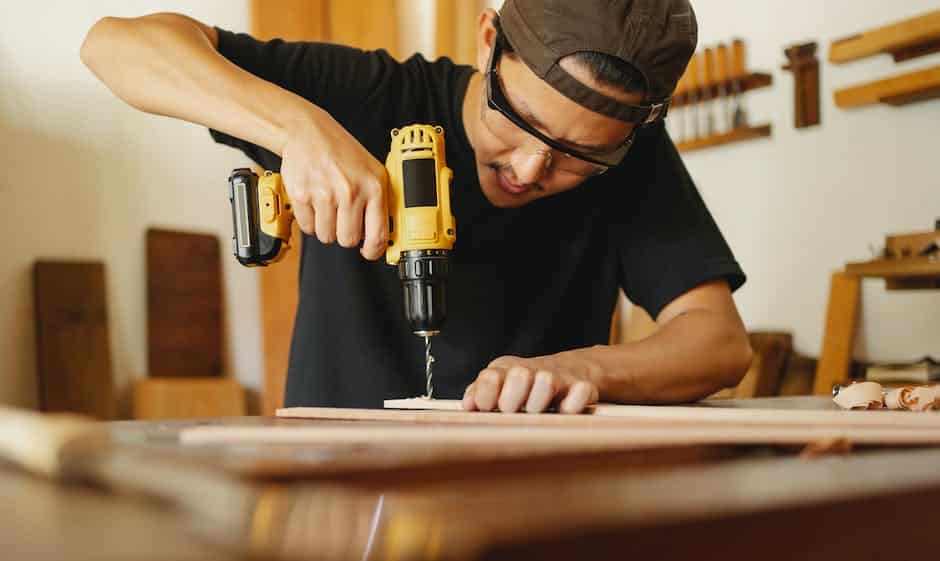How to Avoid Hitting Wires While Drilling
Drilling into walls can be a daunting task, especially when you’re unsure of the location of electrical wires. The last thing you want is to accidentally hit a wire and potentially cause a dangerous situation. Fortunately, there are several best practices you can follow to minimize the risk of hitting wires while drilling. In this article, we will explore these practices in detail to help you safely navigate your drilling projects.
1. Map Out the Area and Turn off the Power
Before you even begin drilling, it’s essential to map out the area where you’ll be working. Take the time to identify the potential locations of electrical wires. It’s important to remember that electrical wires typically run along the sides of studs and often vertically from outlets or horizontally at the same height as outlets.
Once you have mapped out the area, it’s crucial to turn off the power before starting any drilling. This step ensures that you won’t accidentally come into contact with live wires and eliminates the risk of electrical shock.
2. Use a Detection Tool
To accurately locate electrical wires, it’s recommended to use a detection tool. There are various tools available that can help you identify the presence of wires in the wall or ceiling. Two commonly used tools are stud finders with electrical detection capabilities and voltage detectors.
A stud finder with electrical detection capabilities can scan the wall or ceiling and indicate the presence of wires. It’s important to thoroughly scan the area and mark safe drilling spots with a pencil. This step will ensure that you avoid hitting any wires during the drilling process.
3. Take Safety Precautions
When drilling, it’s crucial to prioritize safety. Always wear safety goggles to protect your eyes from any debris that may be generated during the drilling process. Additionally, insulated gloves can provide an extra layer of protection against potential electrical shocks.
4. Drill Slowly and Cautiously
Once you have identified the safe drilling spots, it’s important to approach the drilling process with caution. Start by drilling slowly and steadily. This approach allows you to have better control over the drill and minimizes the risk of sudden movements that may cause the drill bit to slip.
Using a drill with a variable speed setting can also be beneficial. Lowering the speed reduces the chances of generating excessive heat, which could potentially damage the wires behind the wall.
5. Choose the Right Drill Bit
Selecting the appropriate drill bit for the job is crucial to avoid damaging any wires. Different materials require different drill bits. Using the wrong drill bit can result in unnecessary damage to both the material and any hidden wires.
Take the time to research and ensure you have the correct drill bit for the specific material you are drilling into. This step will help you avoid any accidents and maintain the integrity of the wiring behind the wall.
6. Consider Hiring a Professional
If you are unsure about the location of electrical wires or if you have a complex drilling project, it is wise to consider hiring a professional. Electricians have the expertise and specialized tools necessary to safely navigate through walls without hitting any wires.
While hiring a professional may come at an additional cost, it provides peace of mind and ensures that the job is done correctly and safely.
Conclusion
Drilling into walls without hitting electrical wires requires careful planning and adherence to best practices. By mapping out the area, turning off the power, using detection tools, taking safety precautions, drilling slowly and cautiously, choosing the right drill bit, and considering professional help when needed, you can significantly reduce the risk of hitting wires during your drilling projects.
Remember, safety should always be your top priority. Taking the necessary precautions and being aware of the potential dangers associated with drilling into walls will help you complete your projects successfully without compromising your safety or the integrity of your electrical system.
Related Websites:
FAQs:
Q: How can you avoid hitting wires while drilling?
To avoid hitting wires while drilling, it is important to thoroughly research the work area, use a stud finder, visually inspect the area before drilling, and call professionals for assistance when necessary.
Q: What are the risks of hitting wires while drilling?
Hitting wires while drilling can cause electrical shocks, fires, damage to electrical systems, and potential injury or even death. It is crucial to take precautions to avoid these risks.
Q: How do I research the work area before drilling?
To research the work area before drilling, identify and locate potential wires using resources such as blueprints, electrical circuit maps, or contacting utility companies. Gather as much information as possible to ensure a safe drilling process.
Q: What is a stud finder and how does it help?
A stud finder is a device that helps locate hidden objects behind walls, including wires. By using a stud finder, you can detect the presence of wires and avoid drilling into them, ensuring a safer drilling experience.
Q: When should I call professionals for wire detection?
It is recommended to call professionals for wire detection in situations where you are unsure about the presence and location of wires, or if the project involves complex electrical systems. Professionals have the expertise and tools to accurately detect and avoid wires.





